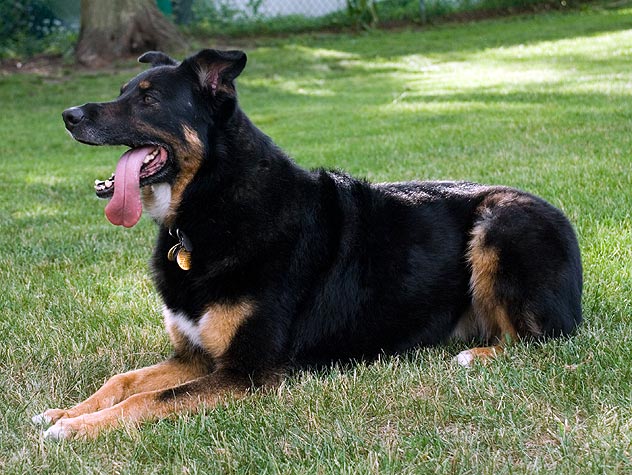Entlebucher Mountain Dog
Large-sized yet compact, the Entlebucher Mountain Dog is strong, nimble, and tough. They are herders, tirelessly working on farms to drive cattle. They have a short and dense coat that keeps them warm and dry, and bright markings that help cattle know where the dog is. They are independent but loyal dogs.
Breed characteristics carousel
Learn More
Need to Know
- Dogs suitable for experienced owners
- Extra training required
- Generally healthy breed
- Enjoys vigorous walks
- Large dog
- Some drool
- Requires grooming
- Chatty and vocal dog
- Barks and alerts to visitors/anything unusual
- Could have issues with unknown dogs but gets along with known dogs
- May need additional training to live with other pets
- Great family dog
- Needs a large yard, preferably in rural areas
- Cannot be left alone
- AKC Registered Breed

Personality
The Entlebucher dog is an independent thinker who is devoted and loyal to their family. They learn fast but are capable of making their own decisions. Protective and vigilant, they have a loud bark which they will use to alert owners to strangers. Generally good with other dogs, the Entlebucher dog breed does best with homes with no children or older children as their herding instincts might take over around small children.
One of the four Swiss Mountain Dogs, the Entlebucher dog breed descended from Roman dogs over 2,000 years ago. They are one of the two smaller Swiss breeds, used to drive dairy cows from mountain pastures. World War I threatened to eradicate the dog; after the war, there was no record of Entlebucher Mountain Dogs. In 1926, 17 of the dogs were located. They came to America in the late 20th century.
Owning an Entlebucher Mountain Dog usually means living on a lot of land, preferably with a farm or someplace for the dogs to do a job. They love to work and stay active and want owners who will do the same. The coat is easy to care for.
Walking on a variety of routes and free running will keep the Entlebucher Mountain Dog breed happy and healthy. They also enjoy games like fetch and anything to do with herding. They are clever and need their minds sufficiently exhausted, so puzzles and training are also a good idea.
Although also known as the mini Swiss Mountain Dog, the Entlebucher Mountain Dog is a large breed and will need large beds, leashes, travel crates, and more. A fenced-in yard is important, especially one in a suburban or rural area. They love to work, so a working farm where they can herd is ideal.
The Entlebucher Mountain Dog’s grooming is low-maintenance. A good daily check after a walk for any debris and a weekly brush-through will suffice. They do shed twice a year.
Quick and clever, the Entlebucher Mountain Dog breed craves a strong bond based on trust and rewards. They will need socialization early and often with any pets and livestock. Small children will be particularly important to socialize with as they tend to want to herd them. A good recall is vital to get them to come back from any off-leash running.
If your family lives on a farm, is active, and has older children or no children, the Entlebucher Mountain Dog might be a good fit. They are heavy, solid, and can be exuberant, something to keep in mind with small children.
The cost of an Entlebucher Mountain Dog from a breeder is significantly more than the cost of adopting one from a local shelter or rescue. The adoption fee usually covers additional items such as spaying or neutering, vaccines, and microchipping.

Learn more about feeding and caring for your Entlebucher Mountain Dog on Purina.
Did You Know?
- The Entlebucher is the smallest Swiss Mountain Dog. The Bernese Mountain Dog is the most well-known Swiss Mountain Dog breed outside of Switzerland.

